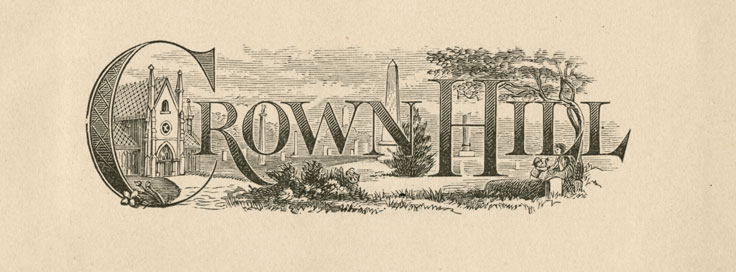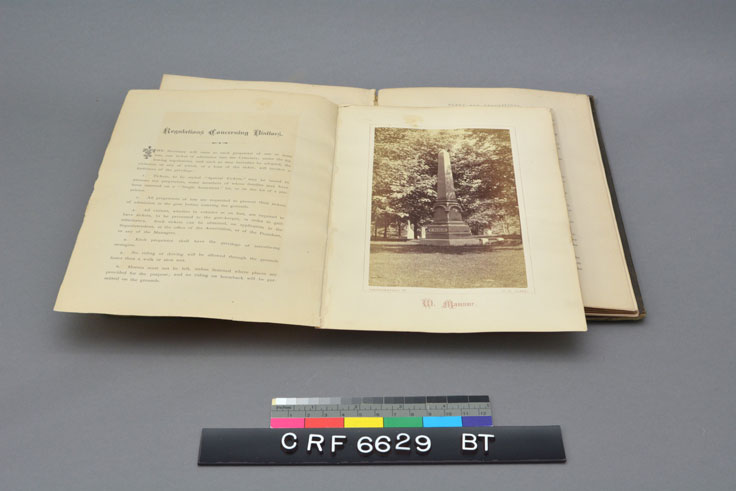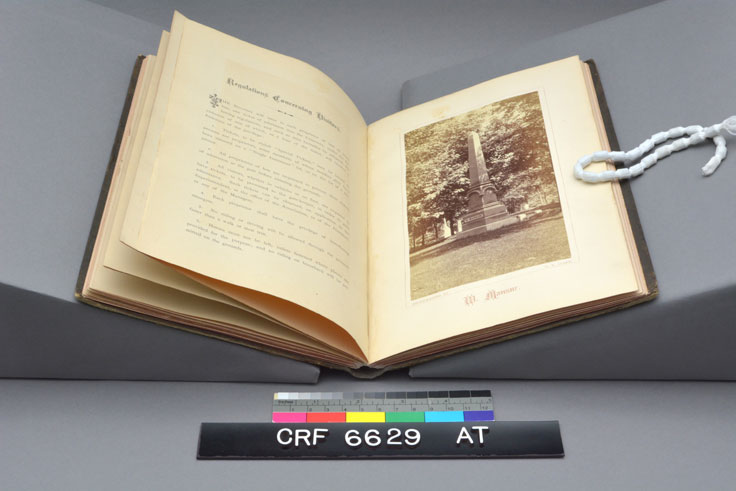
Purchase Tickets
Valuable Resource Gets Some TLC Thanks to One of You

With millions of items in our collections, sometimes we “do history” with the help of our visitors. Recently in the William H. Smith Memorial Library, a concerned patron brought the fragile condition of a book about Crown Hill Cemetery to our attention. This 91-page, bound volume – titled The Origin, Organization and Management of Crown Hill Cemetery with Observations on Ancient and Modern Modes of Burial, Together with a List of Officers, Corporators and Lot-holders for 1875 – holds important information and photographs documenting its early history and the early history of Indianapolis.
Crown Hill Cemetery was dedicated in 1864 to meet the demands of a growing city and handle the burials of Union soldiers. Today, it serves as a chronicle of Indiana history as seen through the stories of the politicians, statesmen, authors, poets, artists, soldiers and others buried there.
The book in its condition could not be safely handled by patrons. Our conservation and reference staff quickly decided this important reference would benefit from both conservation treatment and digitization.

Before treatment
The condition issues were caused because albumen photographs, mounted on heavy cardstock paper, had been adhered along the inner edge of adjacent pages throughout the book. These adjacent pages were made of much thinner, somewhat brittle paper and couldn’t withstand the stress caused by use. The text block – the inside pages of the book – could not freely move, which resulted in breaks and many detached and torn pages. Our conservators got to work.
Albumen photographs, popular from 1860 to 1890, are prints made on paper coated with egg white and light-sensitive silver nitrate.
Treatment involved completely disbinding the book and releasing the photograph inserts from their pages. Next, we extensively mended the book and reinserted the photos using hinges made of long-fibered paper. This means after rebinding, all the pages in the book move more easily, flexing from the spine instead of along breaking edges caused by pages that were stuck together. After this step, the book was sturdy enough to be digitized using a flatbed scanner.

After treatment
Our Preservation Imaging Department scanned the pages and ran them through OCR – optical character recognition – software so all text could be fully searchable online. The last step was uploading the PDF to our online digital collections, adding a description and other metadata to make it easily accessible to researchers.
After digitization, the book was ready for its final conservation treatment – repairing the original cover with custom-colored linen and reattaching it to the text block so it could be handled once again.
This is a great example of how our visitors and staff can work together to support our mission of “connecting people to the past by collecting, preserving and sharing the state’s history.” In this case, feedback from a library patron and follow-through from our staff resulted in preserving a resource and making it widely accessible.
Find the Crown Hill book in our Indianapolis Bicentennial digital collection at images.indianahistory.org.








